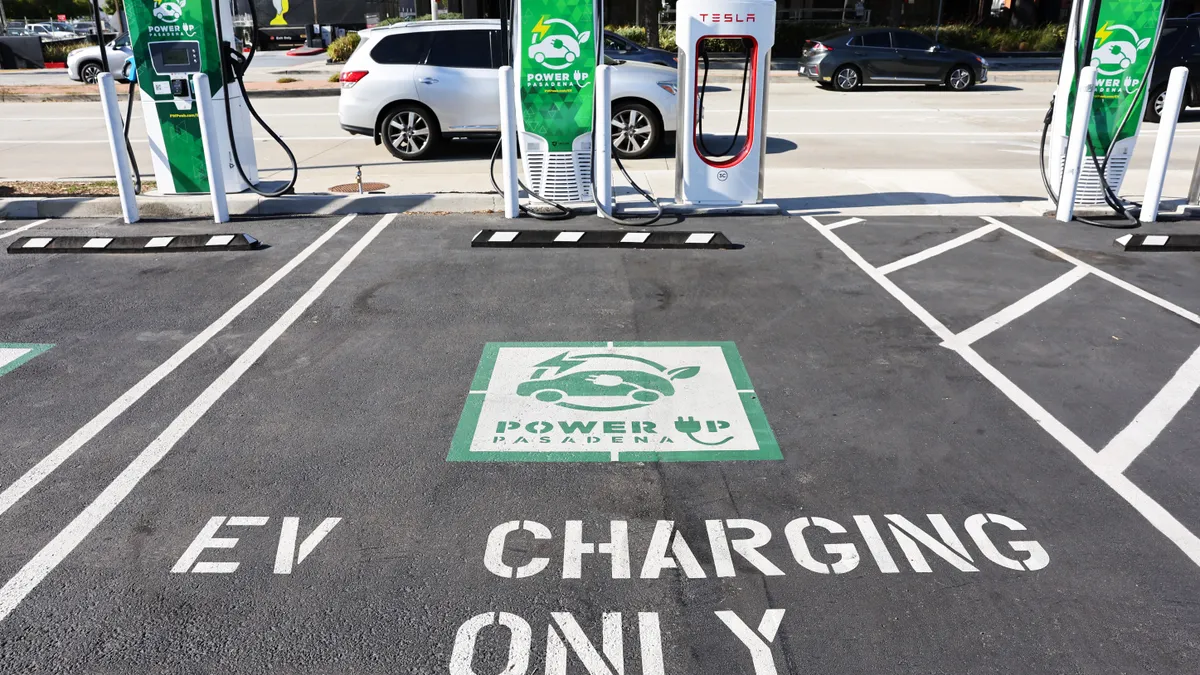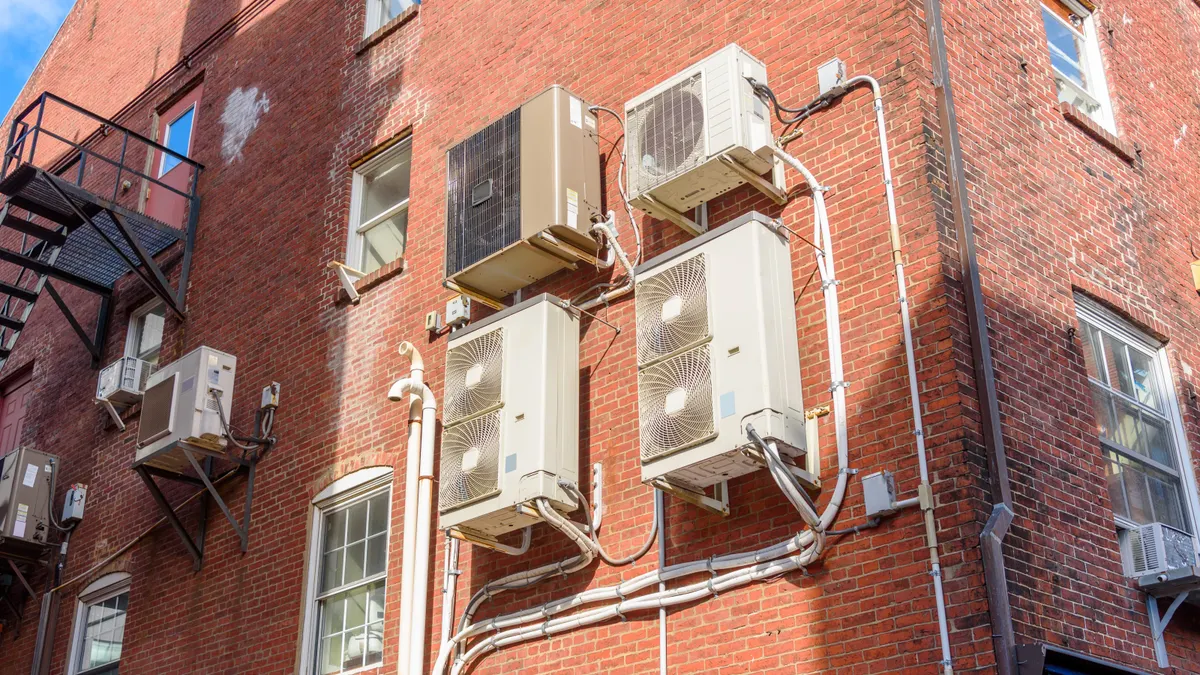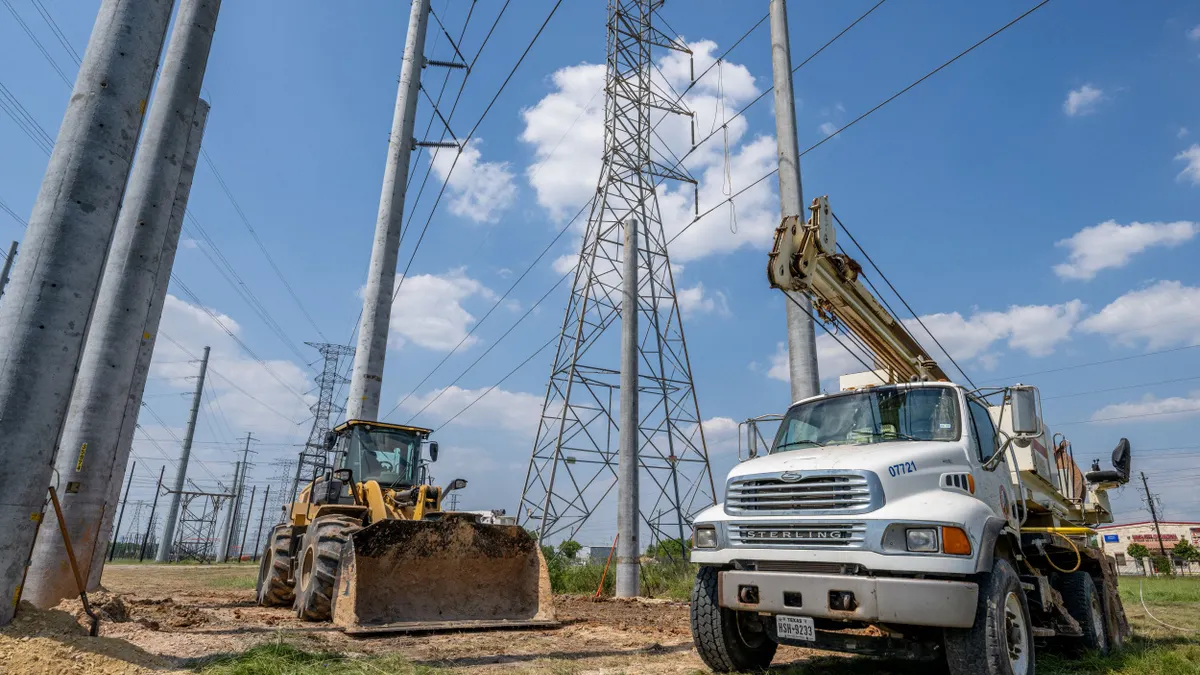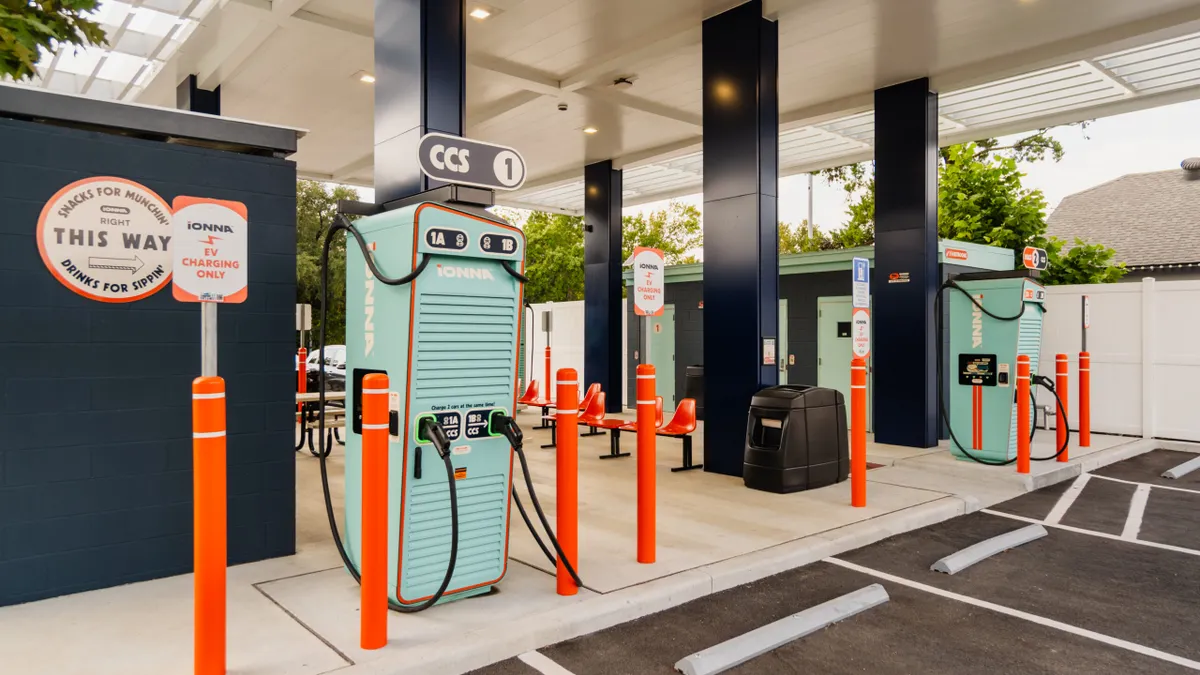Electric vehicle charging has become one of the primary talking points in the convenience-store industry over the past couple of years, as both large and mid-sized chains have revealed plans to build EV-charging stations on site.
However, the nationwide rollout of EVs is going to take longer than consumers think, according to one expert.
“EVs will play a major role in the path towards a lower carbon transportation space, but there’s a huge difference between perception and reality,” John Eichberger, executive director for the Fuels Institute, a nonprofit fuels research organization founded by the National Association of Convenience Stores, said during a recent webinar addressing the current EV landscape.
Case in point: Americans believe that 20% of vehicles in operation today are electric and that 24% of vehicles sold in 2021 were electric. In reality, only 17% of vehicles sold in 2030 will be electric, according to notes presented by Eichberger during the webinar.
“We need to make sure we’re matching reality with our aspirations,” he said. “We can do that, but it’ll be a little messier than what we’d see in a commercial.”
Many unexpected hurdles will arise for stakeholders during EV expansion, he said.
“It won’t be that straight-line trajectory,” he said. “We need to recognize that. We need a pragmatic view of where the market is going.”
Permits, deployment and funding challenges
One hurdle is complications with electric vehicle supply equipment permits. The EV industry currently lacks a set of clear, coherent guidelines from higher levels of government to foster EV coordination, Eichberger said. He noted that improved policies coordinated among jurisdictions can create consistency, predictability and economies of scale.
He said such streamlined policies could include having a single universal application for all required permits; allowing the review of applications for multiple permits at once; enabling online applications; and better clarifications of what documents must be submitted to satisfy all permits.
Another hurdle EV stakeholders face is knowing where to deploy charging stations around the country, Eichberger noted.
“We need to pay attention to where EVs are being deployed so we can capitalize on their benefits,” he said. “Think about where the demand is going to be.”
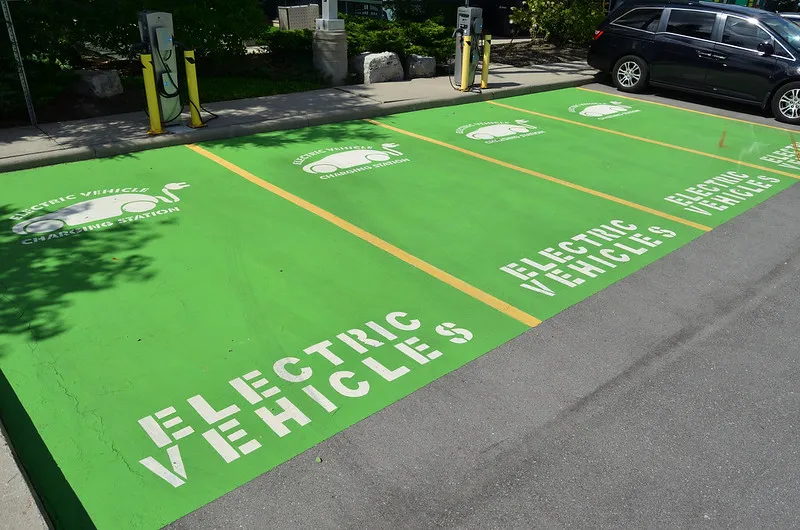
In July 2021, the Fuels Institute made a state-level prioritization forecast of EV-charging installation. The forecast considered factors such as number of expected plug-in EVs over the next decade, housing mix, miles traveled and parking habits in each region, among other factors.
The states were then ranked on a scale of one to four, with one being the highest priority.
California was the only state that scored a one, while Texas, Florida and New York each scored a two. Every other U.S. state scored either a three or four.
“This is not to say [the states that scored three or four] don’t need chargers, but when looking at how to prioritize our attention, they might not need to be at the top of prioritization,” he said. “We need to look at the market-specific conditions to decide where it makes most sense to decide where to invest in charging infrastructure.”
Government funding and incentives for EV charging have also presented a sticky situation for stakeholders.
On the one hand, many markets currently need government funding to support their charging infrastructure. In September, President Joe Biden’s administration approved EV charging network plans submitted by all 50 states along with Puerto Rico and Washington, D.C. These plans are part of the National Electric Vehicle Infrastructure program, which includes $5 billion in funding over a five-year period to install chargers across 75,000 miles of U.S. highways. According to Eichberger’s data, markets that have received government incentives for EV charging have seen higher demand.
But on the other hand, the industry will need to eventually reach a point where markets aren’t reliant on government support, he said.
“This is not a job where the government should be having to continue to support this,” he said. “The initial support and other funding is critical, but at some point, this needs to be sustainable.”
Retailer considerations
For c-store retailers considering getting into the charging-station game, Eichberger suggests they ask themselves questions like if they’ll enter the market alone or with the help of a third party, how much their investment will cost, how much power they need to install and where on site the chargers should be located in comparison to fuel pumps.
Additionally, he suggests retailers know their market and know their customers before taking the jump.
“Who are your customers? What are they driving? What do you think they’ll be driving in the next few years, and how can you support them?” he said. “It really depends on your individual circumstances.”
Eichberger admits that EV charging won’t be for everyone — that there are certain lifestyles and personalities where EVs may not be a solution.
“One thing EVs are struggling with is they don’t provide much of a tangible, ‘Improve my life and convince me to replace the vehicle I’ve driven for years’ benefit.,’” he said. “[But] as economics change, that rationale should change.”



